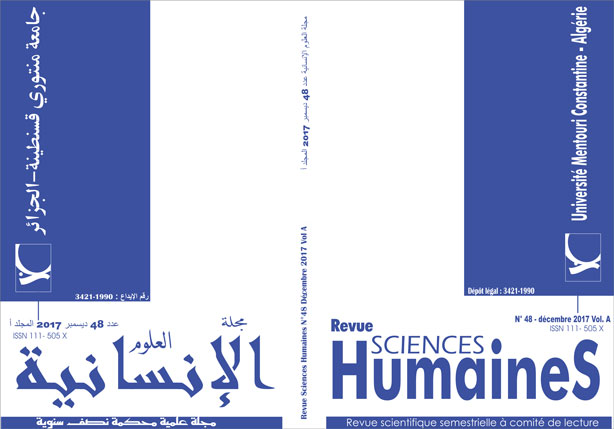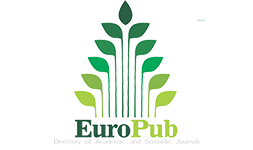The Contribution of Working Memory Capacity in Developing the Learner’s Oral Proficiency Case Study: Third and Fourth Year Students, Ecole Normale Supérieure of Constantine
Keywords:
working memory, Oral proficiency, language learningAbstract
This study is an attempt to highlight the role working memory capacity plays in developing language learners’ oral proficiency. It also targets the issue of identifying the very essential component of the same system, the phonological loop, in the speech production process. This article begins with a literature review explaining the different parts of the human memory as a whole, and the major constituents of working memory in particular. This is followed by an experimental study analysis conducted on a population of 45 students in the Department of English in the Teacher Training School of Constantine, and the results of which revealed that the specific characteristics and functions of working memory would be of great significance in improving learners’ speaking fluency, thus, confirming and validating our hypothesis.
Downloads
References
Baddeley.A.D (1999): Essential of Human Memory. Psychology Press Ltd.
Baddeley.A.D,Gathercole.S.E, and Papagno.C (1998): The Phonological Loop as a Language Learning Device. Psychological Review.
Cook.V (2002): Portraits of the L2 User. Second Edition. Multilingual Matters Ltd
Dehn.M.J (2008): Working Memory and Academic Learning: Assessment and Intervention, John Wiley and Sons.
Eden.G.F and Flowers.L (2008): Learning, Skill Acquisition, Reading and Dyslexia. John Wiley and Sons
Ellis.N.C (1996): Sequencing in SLA: Phonologicql memory, Chunking and Points of Order. Studies in Second Language Acquisition.
Ellis.N.C (2001): Cognition and Second Language Instruction, Cambridge University Press, New York
French.M (2006): Phonological Working Memory and Second Language Acquisition: A Developmental Study of Francophone Children Learning English in Quebec. Edwin Mellen Press
Gathercole.S.E and Alloway .T.P (2007): Understanding Working Memory: A Classroom Guide. Harcourt Assessment: Procter House.
Gathercole.S.E and AllowayT.P (2008): Working Memory and Learning: A practical Guide for Teachers. SAGE Publication Ltd
Goldstein (2005) "Cognitive Psychology - Connecting Mind, Research, and Everyday Experience", Thomson Wadsworth TM 2005
Haastrup.K (1991): Lexical inferencing Procedures or talking about words. Gunder NAN Verlag Tub-ingen
Henry.L (2012): The development of Working Memory in Children. SAGE Publication Ltd.
Moxon.D(2000): Memory. Heinman Educational Publishers.
Special.G, Ellis.N.C and Bywater.T (2004): Phonological Sequence Learning and Short Term Store Capacity Determine Second Language Vocabulary Acquisition. Applied Second Language.
Rice.M.L and Warren.S.F (2004): Developmental Language disorders: From Phenotype to Etiologies . Lawrence Elbaum Associates, Publishers. London

















